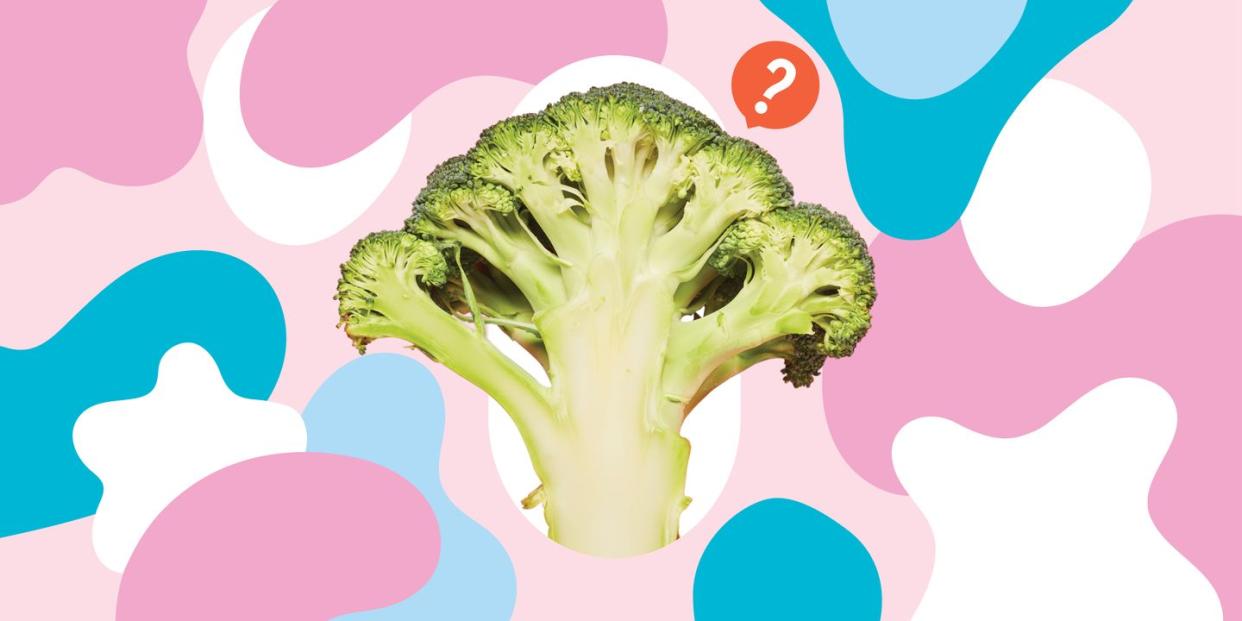Derms Say Curing Your Hormonal Acne Could Be As Easy As Taking A Supplement—But There's A Catch

If you’ve suffered from hormonal acne, you know there's no easy fix. And yet, there's a supplement that's starting to garner attention for how well it seems to work. Diindolylmethane, or DIM, is a compound derived from cruciferous vegetables (think: broccoli, cauliflower, brussels sprouts, etc.)—but if you can’t get enough of it through your diet, it also comes in supplement form.
While it might seem too good to be true that a compound from green veggies could heal hormonal acne, some research indicates that it could even work as well as prescription medications. In fact, Morgan Rabach, MD, dermatologist and Co-Founder of LM Medical in NYC, says that it may work similarly to Spironolactone, a prescription drug dermatologists often recommend to treat hormonal acne.

DIM seems to work by balancing your hormones.
Experts hypothesize that DIM may help balance hormones by blocking excess testosterone—and when hormones are balanced, hormonal breakouts should, in theory, be diminished. Let’s back up a bit: When androgens (aka male hormones like testosterone) and hormone receptors (cells that translate messages to the body) bind together, it causes changes in the skin that can lead to acne.
“Think of androgens binding to hormone receptors like a key in a lock—there is a cascade of effects that it unlocks when it happens,” says Dr. Rabach. "This includes things like increased oil production in the face, which clogs the pores and leads to acne. In short, when androgens and hormone receptors interact, acne happens, but Spironolactone prevents that from ever happening to begin with.”
DIM, as mentioned before, is thought to have the same mechanism as spironolactone. “It binds to the androgen receptor so that there's no 'hole' for the androgen 'keys' to bind to," says Dr. Rabach. "When the the two can’t bind, then oil isn’t increased, and fewer clogged pores means less acne."

However, there’s not too much hard data on DIM.
Because there is not yet solid data backing up these results or documenting clear dosages to recommend, Dr. Rabach says she's unlikely to recommend DIM in spite of the fact that, anecdotally, it works for many people.
"DIM shows promising results on hormonal acne in some people and may be a viable natural alternative for people that do not want traditional medicine, but there are no randomized placebo controlled studies, so I can't endorse it 100 percent," she says.
One other thing to note: The supplement industry isn't regulated, meaning the FDA doesn't vet products to make sure they contain exactly what they say they do. So, even if research indicated the dosage required for results (which it doesn't), it's hard to say for sure if you'd actually be getting that dosage from supplements you can buy in stores.
Still, some people have seen major results while taking diindolylmethane.
New York City-based publicist and blogger Stephanie O’Quigley read about DIM online after finding herself “lost for options on treating acne.” Because it appeared every month at the same time and was mostly centered around her chin, Stephanie strongly suspected it was related to hormones—and “no amount of clean pillowcases, salicylic acid or a dairy-free diet,” was making a difference.
“I started taking 200mg of DIM—I'd read online that this was a great starting dose," she says. "After two to three months, I started to see results." After four months, her skin was pretty much clear. “I didn’t have to worry about waking up with a big whitehead on my chin," she says. "I would get the odd pimple, but for the most part, I felt great about my complexion.”
For Stephanie, however, the good results ceased after seven months. “There are so many factors that we don’t know about each individual who takes DIM, like how is their diet, skin hygiene, stress, etc.," says Dr. Rabach. "One of those factors or a combination can override DIM." Unfortunately, it comes back to the same limitations on our knowledge of DIM's effectiveness and how it works: "There is no good research to explain how long or if DIM will work for everyone in a predictable way," says Dr. Rabach."
Okay, so how much DIM would be required to successfully improve hormonal acne?
While there is no research-backed recommended dosage, anecdotally, some people say taking 100 milligrams twice a day has worked for them—though, of course, you should always consult your dermatologist or doctor before adding a new supplement to your regimen.
If you and your doctor do decide DIM is a good fit for you, Dr. Rabach says the most common side effects to be aware of are nausea, vomiting, bloating, diarrhea, gas, and headaches. It could also darken your urine due to the presence of DIM metabolites that have an amber color. "Individuals who eat large amounts of DIM-containing cruciferous vegetables would notice similarly colored urine," says naturopathic doctor Marcus Laux.
Bottom line: It may be worth a shot—if your doctor approves.
While the hard-and-fast data and studies may not be there for DIM, the initial feedback from people who have used it is that it may work very similarly to Spironolactone. Plus, there are multiple personal success stories online. Sound like it might be a good fit for you? Be sure to have a conversation with your doctor first to determine whether it's safe.
This article is part of Women's Health 2020 Acne Week. Click here for more.
You Might Also Like